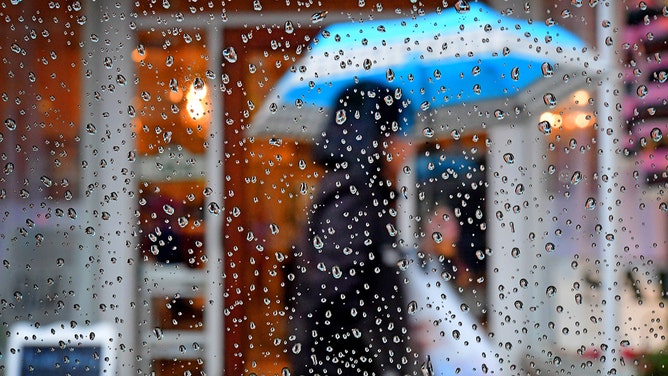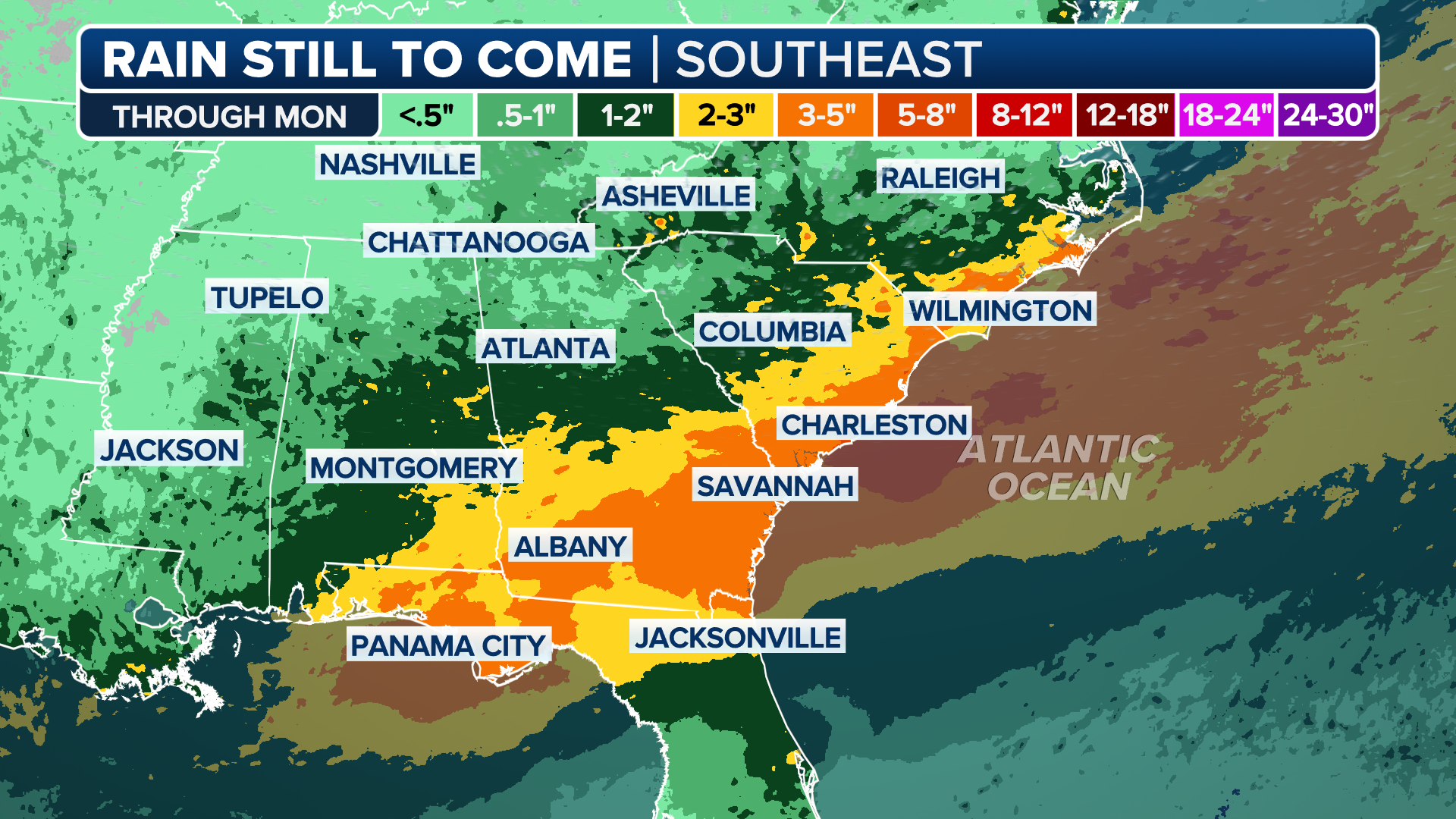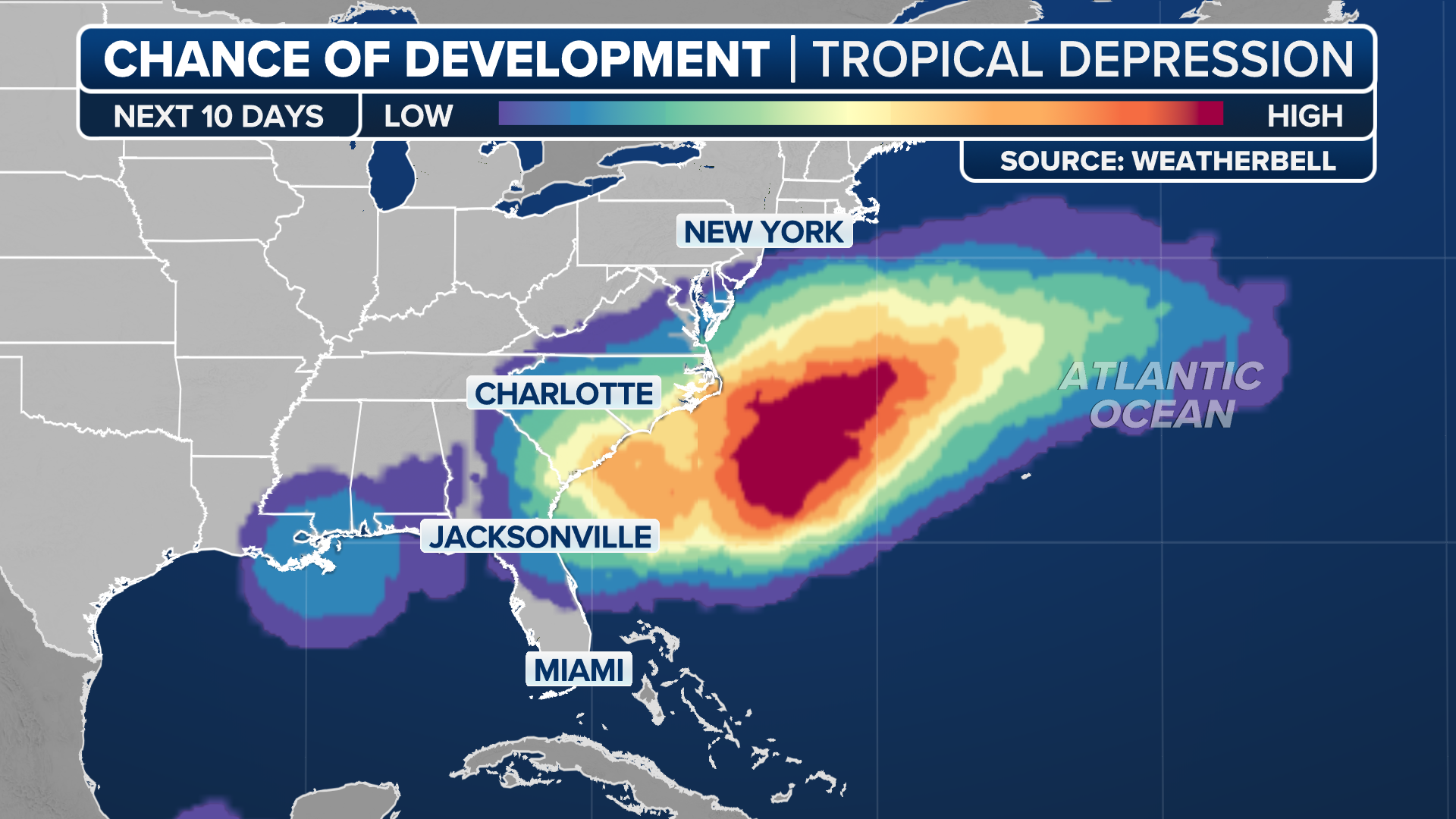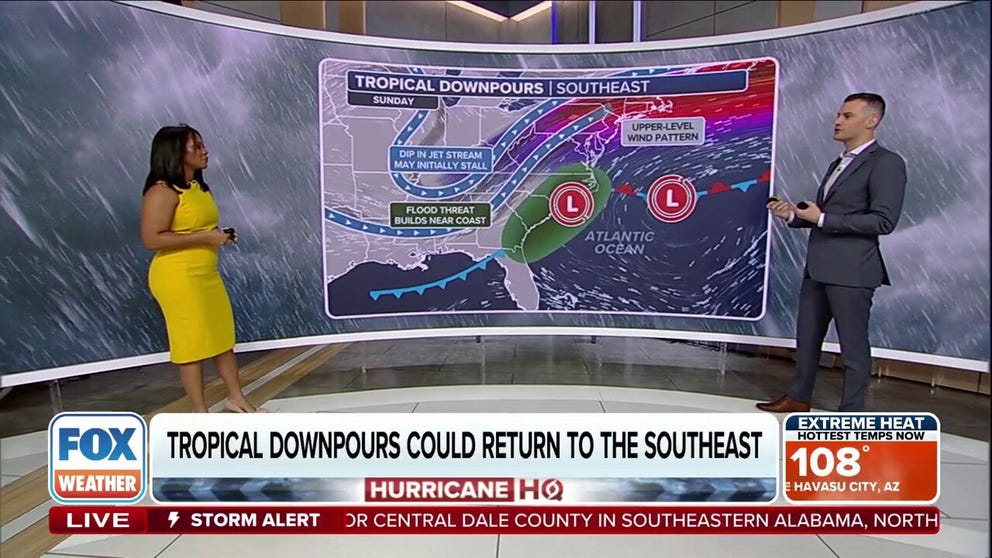CHARLESTON, S.C. – Just as the heat dome that has kept the Southeast sweltering this week breaks down, tropical downpours will return to the region and bring with them a risk of flooding.
The eastern half of the U.S. has been gripped by a sprawling heat wave that has kept millions of people in record-setting temperatures. A cold front moving out of Canada will bring an end to the heat for some starting Wednesday.
NORTH CAROLINA GAMER SHOCKED BY LIGHTNING WHILE LIVESTREAMING

FILE – People take shelter from the rain under umbrellas as they are viewed through the raindrops collected on an automobile window Feb. 10, 2020.
(Thomas A. Ferrara / Newsday RM / Getty Images)
The front will lose its punch by the time it arrives in the southern U.S., eventually stalling in the region. That will serve as the catalyst for a storm system that will bring buckets of rain to the region this weekend. Starting Friday, the abundance of tropical moisture will lead to several inches of rain across the Southeast.
The heaviest rain is expected in places such as Charleston, South Carolina; Savannah, Georgia; and Wilmington, North Carolina. However, amounts of between 3-5 inches of rain are possible well inland.
WATCH: LIGHTNING STRIKES HOOD OF TRUCK DURING TEXAS STORM

(FOX Weather)
NOAA’s Weather Prediction Center has outlined a Level 2 out of 4 risk of flooding in the region for Friday and Saturday.
HOW TO WATCH FOX WEATHER

(FOX Weather)
There is a low chance that the storm system kicked up by the parked front could develop a tropical component, but that will not impact the forecast of heavy rain that is expected to fall on the region.
“It’s a boundary over warm sea surface temperatures,” FOX Weather Meteorologist Ian Oliver said. “If it hangs around too long, it’s going to have a chance at developing at least some tropical characteristics.”
SEE IT: DOLPHIN CALF REUNITED WITH MOTHER AFTER BEING FREED FROM FISHING NET

(FOX Weather)
Flooding driven by tropical downpours has been a common theme in the weather pattern for the Southeast over the past month. Chantal made landfall on the South Carolina coast in early July, and two other tropical disturbances have moved across the Southeast since then.


